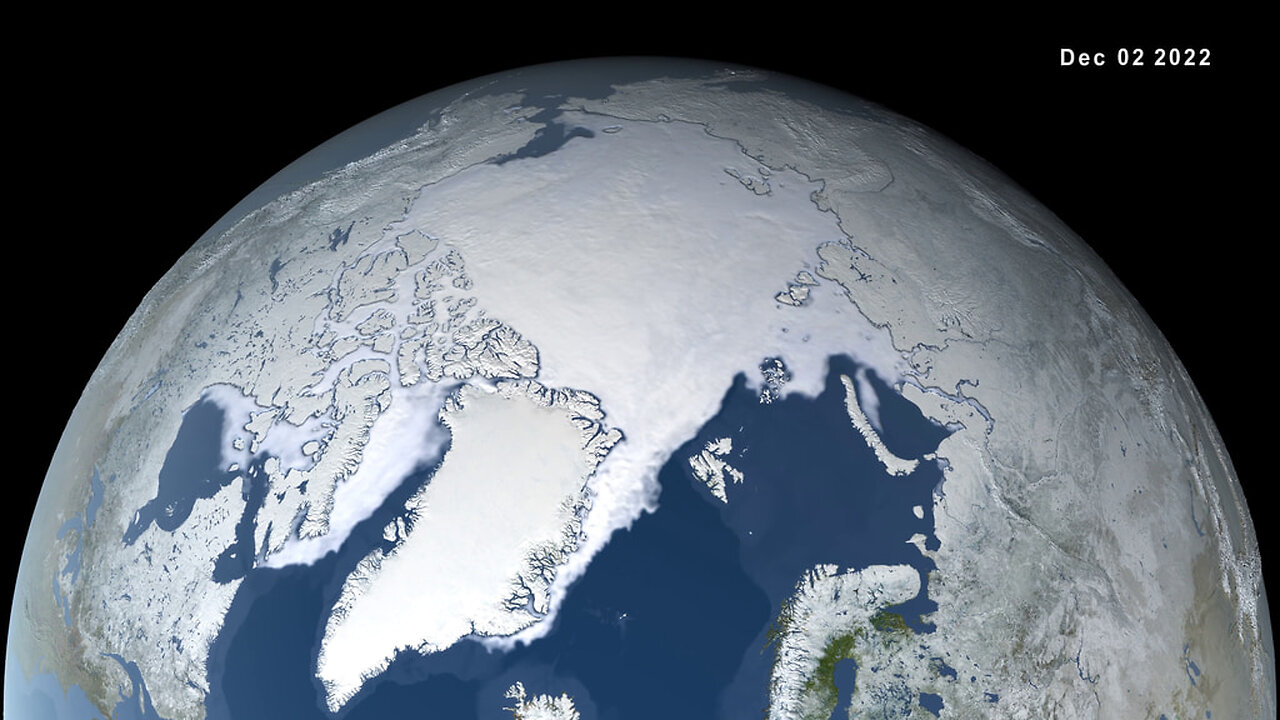Premium Only Content

Arctic Sea Ice Hits 2023 Maximum
On March 6, 2023, the Arctic sea ice pack appeared to reach its maximum extent for this winter, at 14.62 million square kilometers, or 5.64 million square miles, according to the National Snow and Ice Data Center.
Fieldwork and satellites like NASA’s ICESat-2 satellite are monitoring the changing ice pack, and helping to predict how the ice will change in the future.
Sea ice is frozen seawater that floats on the ocean surface. It forms in both the Arctic and the Antarctic in each hemisphere’s winter; it retreats in the summer, but does not completely disappear. This floating ice has a profound influence on the polar environment, influencing ocean circulation, weather, and regional climate.
Since 1979, satellites have provided a consistent continuous record of sea ice. Through 2015, the average monthly September extent of Arctic sea ice has declined by 13.4 percent per decade relative to the average from 1981 to 2010. Declines are occurring in every geographic area, in every month, and every season. Natural variability and rising temperatures linked to global warming appear to have played a role in this decline. The Arctic may be ice-free in summer before the end of this century.
-
 23:08
23:08
DeVory Darkins
1 day ago $4.87 earnedCNN suffers HUMILIATING SETBACK after Iran confirms damage to nuclear sites
7.14K72 -
 8:09
8:09
Nate The Lawyer
1 day ago $0.09 earnedKarmelo Anthony Indicted for First‑Degree Murder Facing Life In Prison
2827 -
 1:06:58
1:06:58
The Chris Cuomo Project
23 hours agoAOC Is KILLING the Democratic Party Over Iran
8908 -
 1:17:05
1:17:05
"What Is Money?" Show
1 day agoGary's Economics Explains Money (Badly)
1.79K4 -
 4:08
4:08
Sugar Spun Run
22 hours ago $1.14 earnedChicken Salad
5.49K4 -
 9:00
9:00
The Art of Improvement
18 hours ago $2.37 earnedHow to Break Through Your Fear of Failure
7.8K2 -
 7:18
7:18
DropItLikeItsScott
1 day ago $0.91 earnedWait, What...I Like GLOCK Now??
3.9K2 -
 LIVE
LIVE
Lofi Girl
2 years agoSynthwave Radio 🌌 - beats to chill/game to
879 watching -
 2:32:02
2:32:02
Side Scrollers Podcast
19 hours agoPirateSoftware Situation, Twitch BANS mang0, “White Man Bad” CRASH OUT | Side Scrollers Live
45.7K9 -
 14:17
14:17
GritsGG
14 hours agoCopy Our Strategy We Use to Win & Instantly Improve!
8.12K1